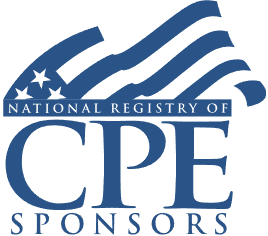Worthlessness Deduction for Partnership Interests
Ordinary vs. Capital Losses, Abandoned vs. Worthless, Recourse vs. Nonrecourse Debt

Course Details
- smart_display Format
On-Demand
- signal_cellular_alt Difficulty Level
Intermediate
- work Practice Area
Tax Preparer
- event Date
Tuesday, July 23, 2024
- schedule Time
1:00 p.m. ET./10:00 a.m. PT
- timer Program Length
110 minutes
-
BARBRI is a NASBA CPE sponsor and this 110-minute webinar is accredited for 2.0 CPE credits.
-
BARBRI is an IRS-approved continuing education provider offering certified courses for Enrolled Agents (EA) and Tax Return Preparers (RTRP).
This webinar will take a comprehensive look at the worthlessness deduction for partnership interests (including LLCs taxed as partnerships). Our panel of esteemed federal taxation veterans will review the (rather limited) available authority, contrast the worthlessness deduction with abandonment, and discuss the impact of recourse and nonrecourse debt on the worthlessness deduction. They will also discuss IRC § 165(g), which primarily applies to stock and certain bonds that become worthless during the tax years.
Faculty

Mr. Mandarino's practice focuses on corporate, tax and finance law. He is involved with a wide variety of businesses and transactions, including experience with compliance, planning and M&A activities for partnerships, individuals and corporations. Mr. Mandarino’s practice also includes representation in tax controversy work. He writes and speaks extensively on a wide range of business, tax and finance topics.

Professor Schwidetzky joined the faculty in 1985 and served as the director of the Graduate Tax Program from 1989 to 2000. Prior to joining the faculty, he practiced law in Denver for six years, concentrating in tax and business law. He was also an adjunct professor at the University of Denver College of Law. Professor Schwidetzky's specialty is partnership taxation. He has authored or co-authored 3 books and has published over 35 articles in academic and professional journals. Unusually for a law professor, many of articles have been appeared in peer-reviewed journals. Several of his publications have been cited by United States Courts of Appeal and Federal District Courts, and one article was discussed in some detail in an 8th Circuit decision. In 2010 Professor Schwidetzky was made a member of the prestigious American Law Institute.
Description
The worthlessness deduction recently made the front page of the New York Times: "Trump may owe $100 million from double-dip tax breaks, audit shows" (New York Times, May 11, 2024) (citing panelist Prof. Walter Schwidetzky). We will examine the transaction that led to the article, whether the IRS’s position is justified, and why the worthlessness deduction may offer unique tax planning opportunities.
Listen as our panel of partnership taxation experts reviews the relevant authority and offers recommendations on calculating and deducting worthlessness deductions for partnership investors.
Outline
- Introduction
- Worthlessness and Abandonment deduction outside of the partnership context, law and cases
- How worthless and abandonment deductions differ and what makes the worthlessness deduction unique
- Capital versus ordinary loss treatment
- Impact of Debt
- 165(g)
- Pilgrim’s Pride
- Worthlessness and Abandonment deduction within the partnership context, law cases, and rulings
- Echols
- MCM Investment Management LLC
- Rev. Rul. 93-80
- TAM 201929019 (which in part led to the New York Times article)
- Practical examples
- Conclusion
Benefits
The panel will review these and other critical issues:
- Distinguishing abandoning an investment and a worthless partnership investment
- Capital vs. ordinary loss treatment of investment losses
- The impact of case law on the worthless investment deduction
- Legislation needed to curb abuse of the worthlessness deduction
NASBA Details
Learning Objectives
After completing this course you will be able to:
- Identify differences between worthless investments and abandoned investments
- Determine how case law has shaped the current state of the worthlessness deduction
- Decide which investments qualify for a worthlessness deduction under Section 165(g)
- Ascertain when the disposition of a partnership interest can result in an ordinary tax deduction
- Field of Study: Taxes
- Level of Knowledge: Intermediate
- Advance Preparation: None
- Teaching Method: Seminar/Lecture
- Delivery Method: Group-Internet (via computer)
- Attendance Monitoring Method: Attendance is monitored electronically via a participant's PIN and through a series of attendance verification prompts displayed throughout the program
- Prerequisite: Three years+ business or public firm experience preparing complex tax forms and schedules, supervising other preparers or accountants. Specific knowledge and understanding of pass-through taxation, including taxation of partnerships, S corporations and their respective partners and shareholders.

Strafford Publications, Inc. is registered with the National Association of State Boards of Accountancy (NASBA) as a sponsor of continuing professional education on the National Registry of CPE Sponsors. State boards of Accountancy have final authority on the acceptance of individual courses for CPE Credits. Complaints regarding registered sponsons may be submitted to NASBA through its website: www.nasbaregistry.org.

Strafford is an IRS-approved continuing education provider offering certified courses for Enrolled Agents (EA) and Tax Return Preparers (RTRP).
Unlimited access to premium CLE courses:
- Annual access
- Available live and on-demand
- Best for attorneys and legal professionals
Unlimited access to premium CPE courses.:
- Annual access
- Available live and on-demand
- Best for CPAs and tax professionals
Unlimited access to premium CLE, CPE, Professional Skills and Practice-Ready courses.:
- Annual access
- Available live and on-demand
- Best for legal, accounting, and tax professionals
Unlimited access to Professional Skills and Practice-Ready courses:
- Annual access
- Available on-demand
- Best for new attorneys
Related Courses

Admitting New Partners: Tax Consequences
Friday, May 30, 2025
1:00 p.m. ET./10:00 a.m. PT

Key Issues in Succession Planning: Buy-Sell Agreements, Equity Grants, Profits Interests, Tax Considerations
Tuesday, June 17, 2025
1:00 p.m. ET./10:00 a.m. PT
Recommended Resources
How CPE Can Bridge the Gap Between What You Know and What You Need to Know
- Career Advancement